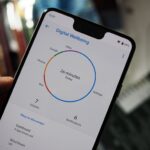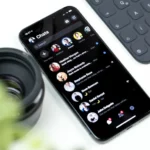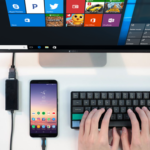You can prevent unintended taps by deactivating touchscreen functions on your mobile and temporarily disabling the touch input on your mobile.

If you are irritated by unintended screen touches on your phone, it might be worthwhile to turn off the touchscreen for specific circumstances.
Whether you employ an iPhone or an Android gadget, continue reading to find out how exactly you can take charge once again and thwart future interruptions.
Disabling iPhone’s Touchscreen Input
The disabled areas of the screen will appear grayed out and will not respond to any touches.
To exit Guided Access, triple-click the Side (or Home) button. Enter your Guided Access passcode or use Touch/Face ID to exit.
Enabling Guided Access is easy; take a look at these steps:
- Navigate to Settings, then select Accessibility, and finally choose Guided Access.
- Turn on Guided Access.
- Access Passcode Settings to configure the passcode that will be utilized for concluding Guided Access.
- Moreover, you have the option of employing Touch ID/Face ID for exiting Guided Access mode.
- By returning to the previous menu and enabling Accessibility Shortcut, you can easily enter Guided Access anytime by triple-clicking either the Side or Home button.
Here’s the process of starting a Guided Access session once it has been enabled:
- Launch the application that you want to secure.
- To activate Guided Access, simply press the Side (or Home) button three times.
- Identify the specific regions on the screen that require deactivation.
- In case you want to disable touch functionality across the whole display, encircle around its complete area.
- To turn off the Side or Volume buttons, click on Options located in the bottom-left corner.
- To initiate Guided Access, tap on Start at the top-right corner of your screen and choose Done to save any changes made.
Grayed-out portions of the screen, corresponding to disabled areas, will remain unresponsive to touch.
To end Guided Access, press the Side (or Home) button three times. You can either input your passcode or employ Touch/Face ID to exit the mode.
To disable the touchscreen on your Android device, it’s necessary to download a third-party app. I recommend using Touch Lock since it has an uncomplicated setup process.
Follow these steps:
Touch Lock is available for download, with the option to access a premium version at an additional cost.
- Upon installation, start the application and select Enable by touching it.
- From the list, choose Touch Lock and activate the Allow display over other apps option by toggling it on.
- Enabling Advanced Lock allows you to lock both the notification panel and volume buttons.
- To do so, simply tap on Touch Lock and enable the Use Touch Lock slider after granting necessary permissions for the app.
- Returning to the application, tap on SHOW and a lock symbol will appear on the right-hand side of your screen.
- To disable your touchscreen, navigate to the desired app and click on the lock icon for it to be locked.
Double-tap anywhere on your touchscreen to display the lock icon and then double-tap it to unlock.
Conclusion
To avoid unwanted touches while recording videos or children using your phone inappropriately, disabling the touchscreen can be of great help.
You can prevent unintended taps by deactivating touchscreen functions on your mobile and temporarily disabling the touch input on your mobile.
If you are an Android user, a third-party app needs downloaded for this feature; however, Guided Access has made it possible on iPhones without any external source.
In both cases though, locking the screen is easily achievable with minimal effort required from your end




